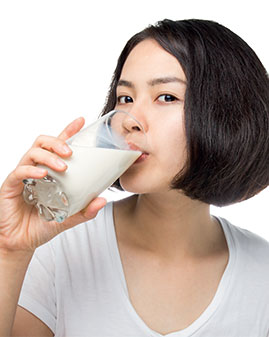
Rude Food
Free-from explained
Whether you are intolerant of certain foods or choose to live a vegan lifestyle, it’s now easier to avoid eating wheat, dairy and sugar and choose alternatives instead
“People are becoming much more aware of what they eat, and the fact that different foods can affect how they feel, and can be linked to symptoms such as IBS, bloating, skin problems, migraines, fatigue and low mood,” says Dr Gill Hart, Scientific Director of YorkTest Laboratories who develop food allergy home testing kits.
“If you have been diagnosed with a food allergy, coeliac disease or a food intolerance then the alternatives can be life changing,” says Gill. “Food intolerance sufferers on average react to four or five foods, so removing just one of them may not be helpful. You are better off getting tested so that you have a starting point for a targeted elimination diet.
“The choice of free-from foods available now is staggering with food manufacturers having to ensure that the customer still gets what they expect in terms of flavour and structure. Be aware though, that free-from doesn’t necessarily translate as ‘healthy’ and what’s taken out has to be replaced with something else. It’s important to read labels and stick to unprocessed natural foods. Remember that for every nutritious food removed from the diet, a suitable replacement is required to keep a balanced diet.”
Gluten-Free
In the past having a gluten intolerance was quite limiting to a person’s diet and lifestyle and it was a struggle to find gluten-free ingredients and products to replace traditional breads and cereals. Thankfully, this is no longer the case.
Health stores stock a wide range of different types of bread made from gluten-free, rice, flax and tapioca flour among others. Ingredients such as gluten-free flour as well as other free-from ingredients such as bread crumbs, xanthan gum, egg replacer, baking powder and soda all make gluten-free baking possible. Plus there’s no need to miss out on snacks and treats with gluten-free biscuits and crackers, plus breakfast cereals too.
Dairy
“There is some evidence that the incidence of human allergic reaction to foods, and dairy, is increasing,” says Graham Lee of Koko Dairy Free.
“Dairy alternatives can help people who suffer from lactose intolerance, which typically causes bloating and diarrhoea. They are important for children who have a dairy protein allergy and for vegans. The most common dairy alternatives are those based on soya. But this too is a classified allergen.
“Milk alternatives are also available made from rice, oats, coconut, almonds, hazelnuts and hemp. Of these almonds and hazelnuts are unsuitable for people with a nut allergy, hemp is unsuitable for people with a seed allergy, and oat-based products may contain gluten which is unsuitable for coeliacs. Rice-based products are not recommended for children under the age of four. Coconuts are actually classed as a fruit, not a nut, and are not an allergen, so coconut-based products are suitable for many people for whom other options are unsuitable. There are also non-dairy alternatives in yogurt, cream and cheese. Most of these are soya-based, but there are now some rice and coconut alternatives.”
Click here to read other Rude Food articles.
Click here to return to the Rude Health Magazine homepage.